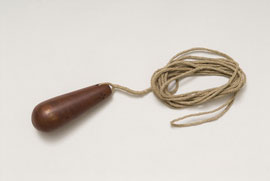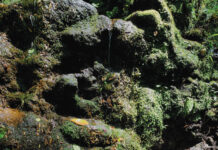
Occasionally, acquaintances will call and offer pieces from a koai‘e, ‘ala‘a, alahe‘e or olopua tree they’re removing from their property. Kai works in Honolulu as the regional sales and marketing manager for Avis/Budget Car Rentals, so if the wood is on a neighbor island, he must consider the cost of airfare, lodging, a rental truck, shipping and manpower. Up to a dozen people may be needed to transport a log out of a remote area.
“You can’t drive a truck there,” Kai says. “You may have to hike two-and-a-half hours to get to where the tree is. Then you have to cut it and hike out two-and-a-half hours with the pieces on your back over rough terrain and up and down steep inclines.”
Adze, chain saw, drill press, grinder, sander—that Kai can transform chunks of rough, raw wood into museum-quality pieces with just a few basic tools is remarkable. He thinks he has it easy.
“The ancient Hawaiians had no such equipment,” he points out. “All they had were ko‘i [stone adzes]; fire; and files made of coral, stone and sea-urchin spine. I’m always in awe of how they were able to sculpt wood and stone into implements that were so refined. Even with power tools, I have difficulty getting my pieces to that point.”
Depending on its size and the labor involved, it may take Kai thirty hours to complete a weapon. He never hurries. “For me, making weapons is a culturally based hobby more than a business,” he says. “Each one I make draws me closer to the Hawaiian culture.”






Thank you for your insight and knowledge, your work is amazing. What was the average weight of most of these weapons?